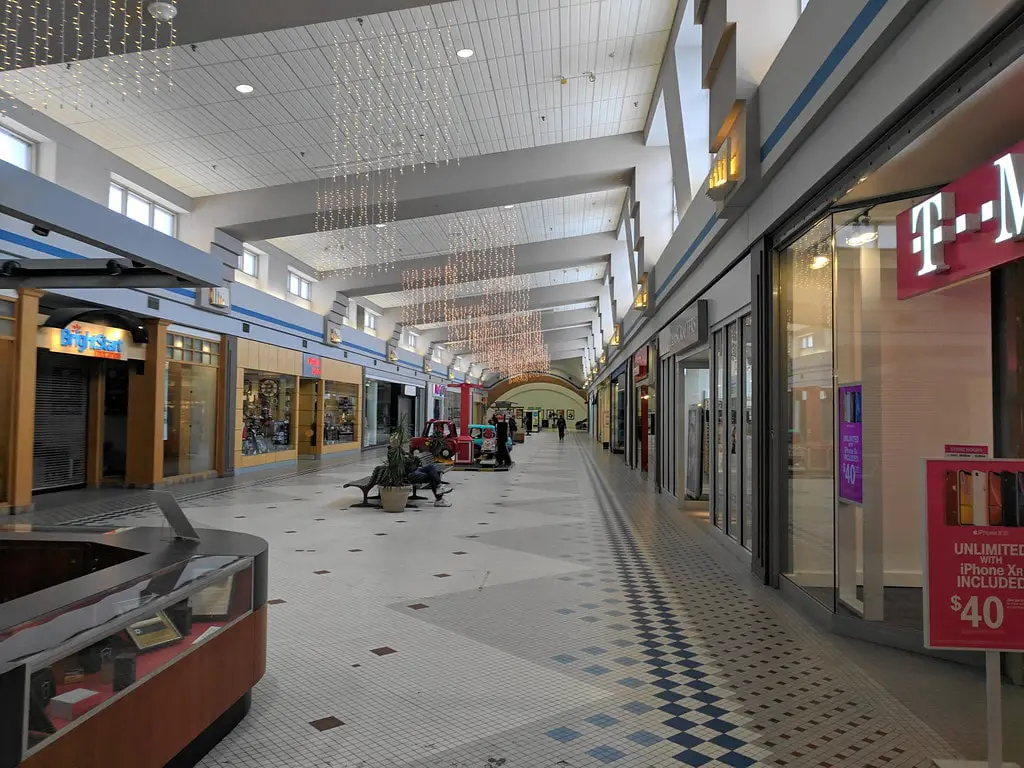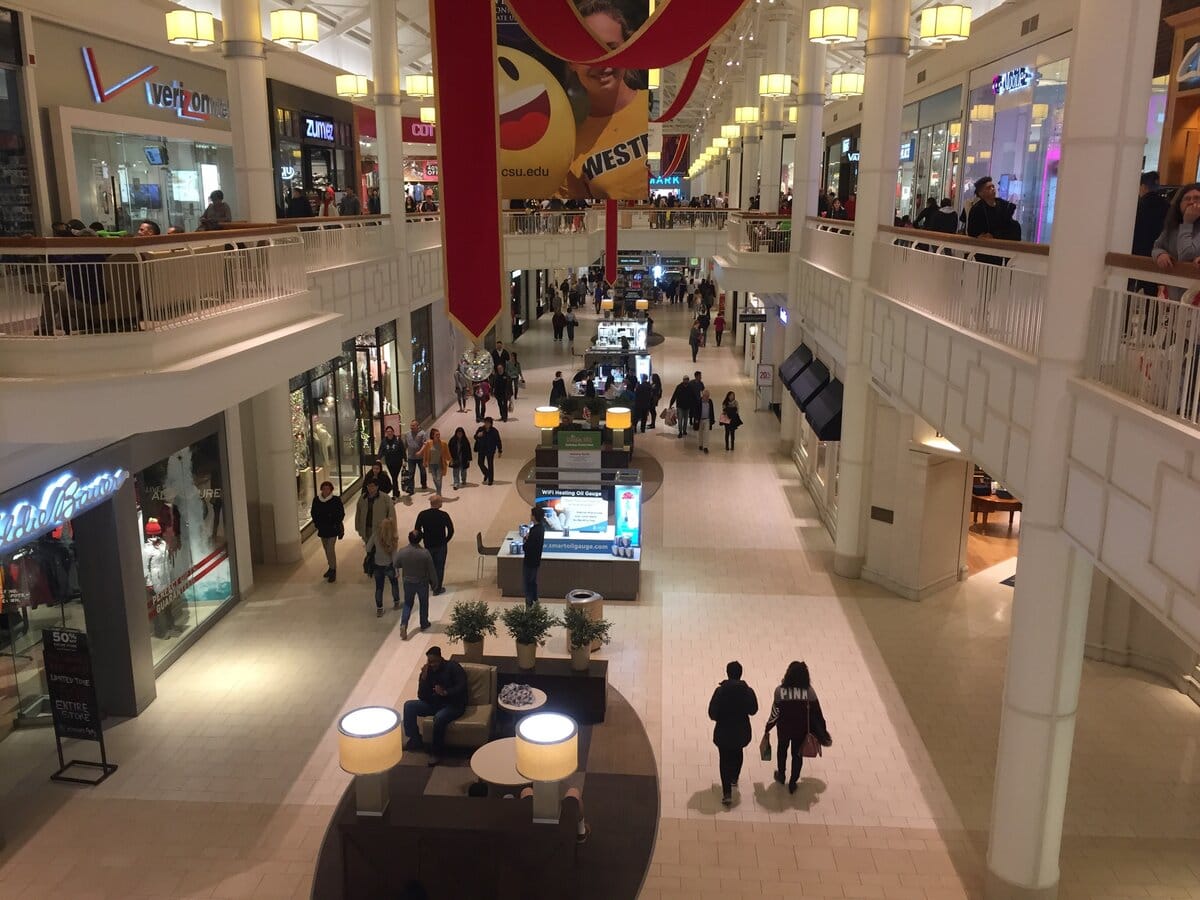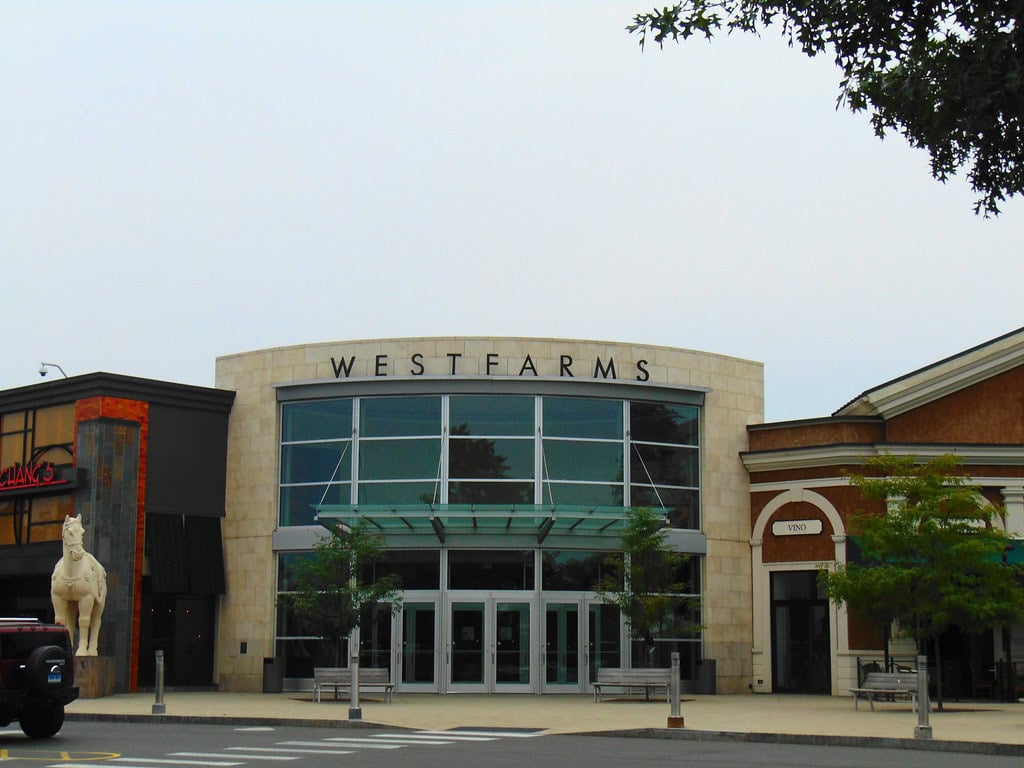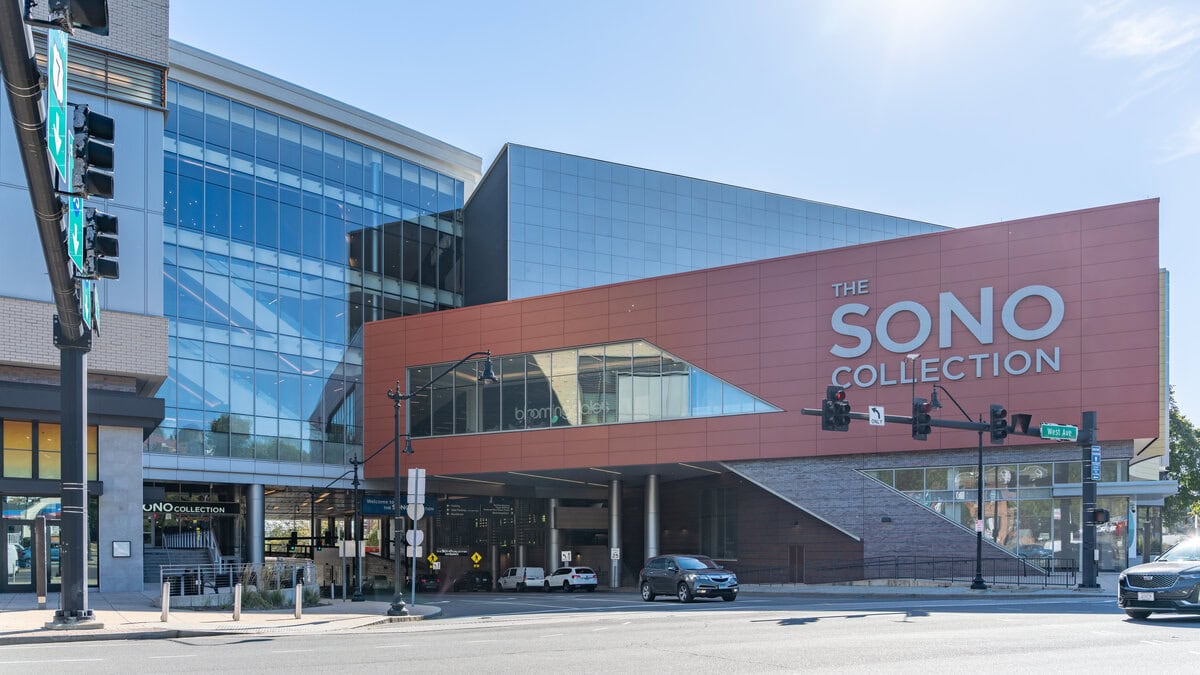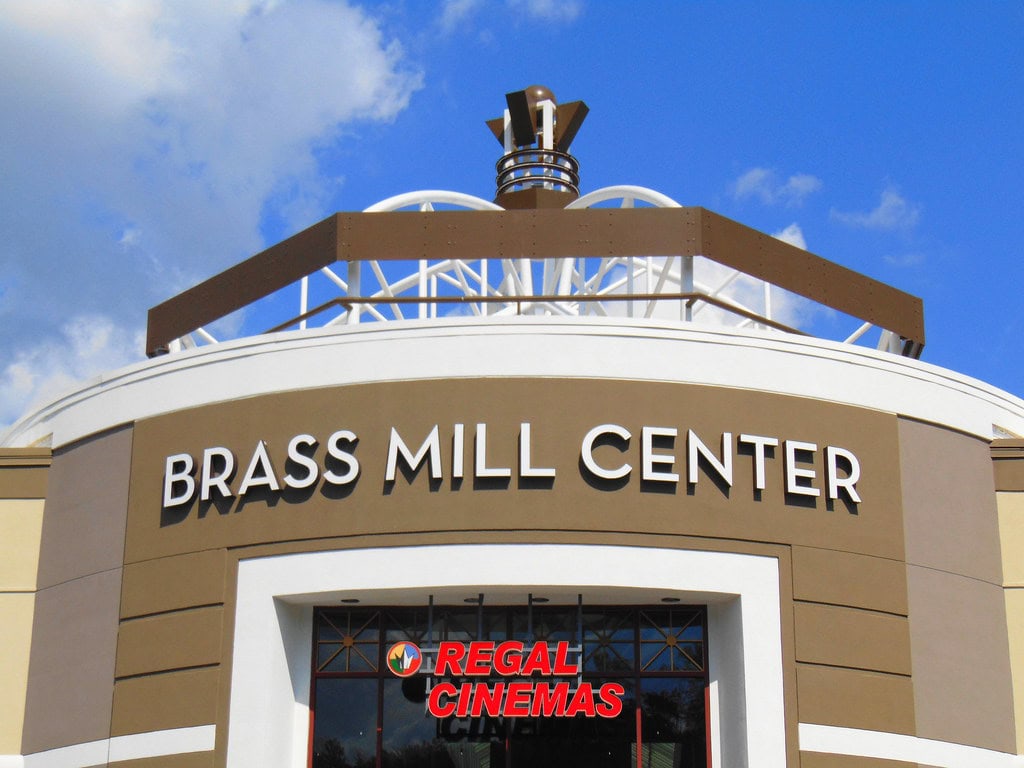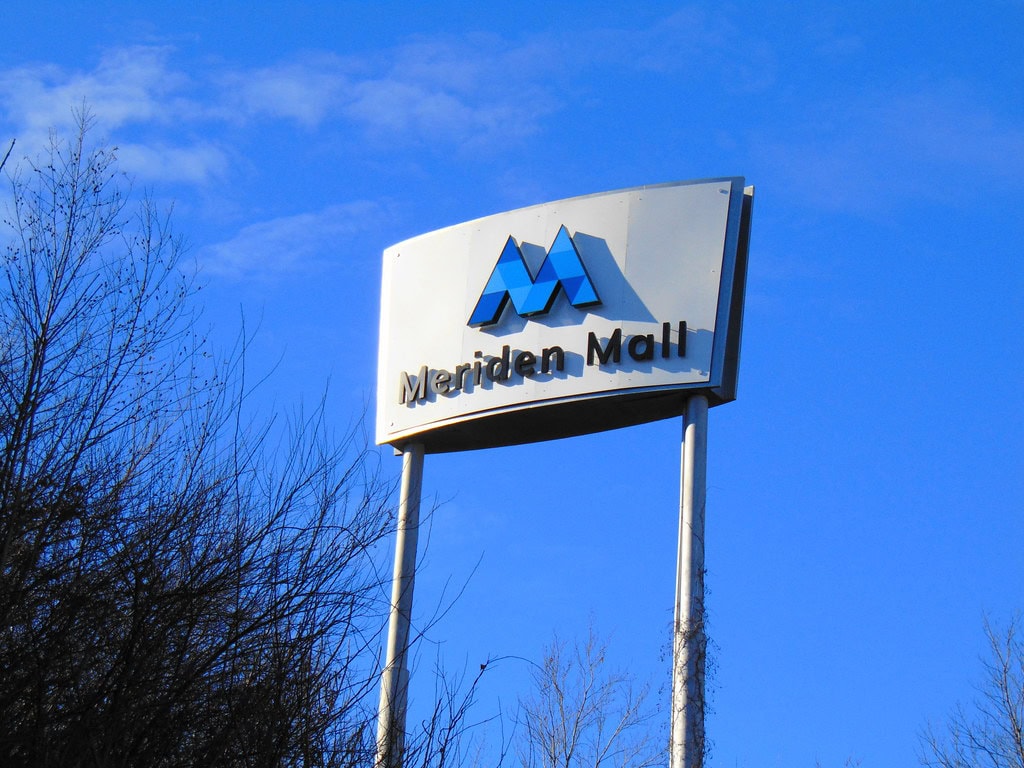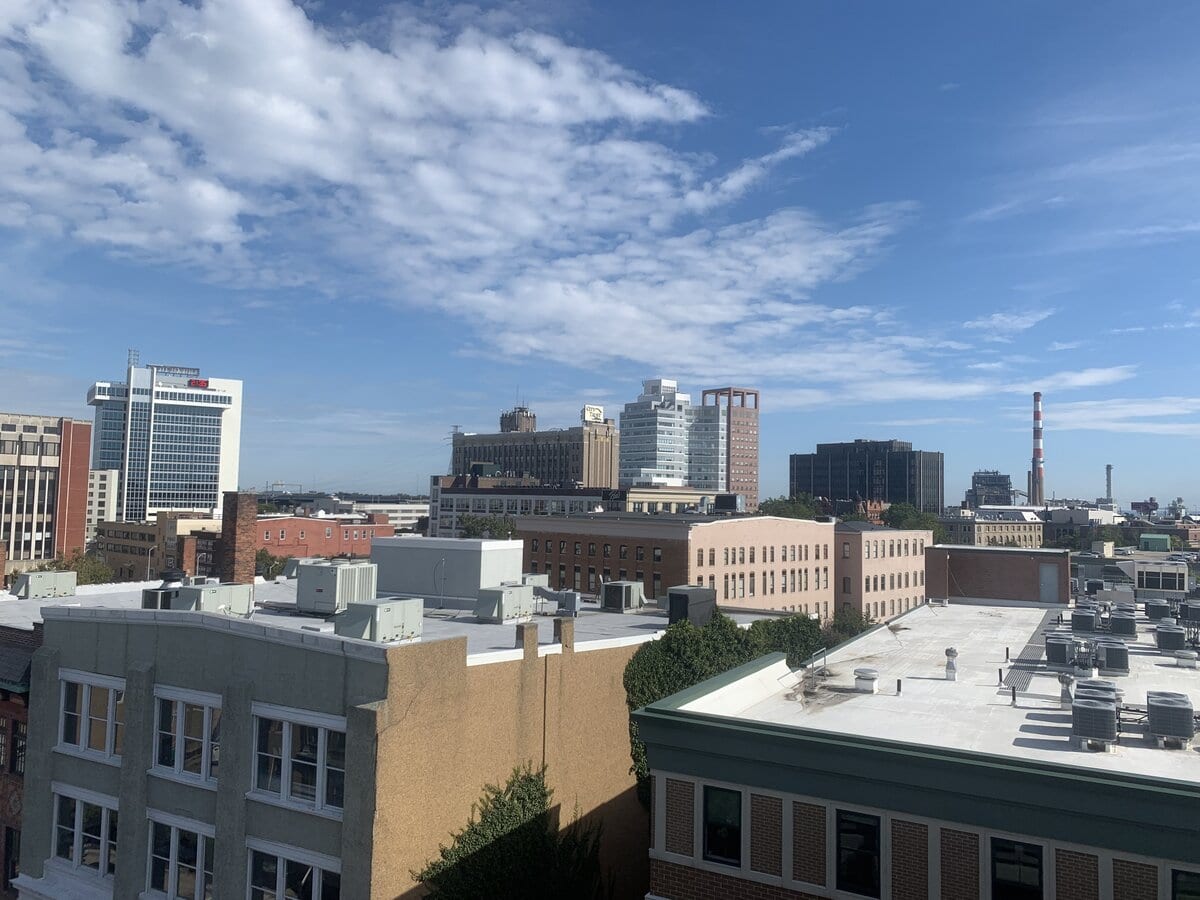Initial Buildout and Anchor Leasing, 1971-1996
Enfield Square Mall opened on November 4, 1971. May Centers, the real estate arm of May Department Stores, developed it.
Located at 90 Elm Street in Enfield, Connecticut, the property had three anchor tenants on day one: JCPenney, G. Fox, and Steiger's. G. Fox took the western anchor spot.
That name carried weight in southern New England retail, though it wouldn't last much longer as an independent brand.
JCPenney was on the north side, and Steiger's operated on the east end - one of the few malls where that regional department store held a main position.
The single-level layout measured about 788,000 square feet.
It was one of the largest enclosed shopping centers in Connecticut at the time.
Most tenants were national chains, but there were also smaller regional stores.
Leasing activity through the 1970s and 1980s kept vacancy low.
Parking wrapped around the mall's footprint and could hold several thousand cars.
In 1993, May Department Stores merged G. Fox into Filene's.
The G. Fox sign came down and was replaced by Filene's, although the space remained mostly unchanged inside.
Steiger's, which had operated since the opening, left the mall in 1994 when the company exited retail altogether.
A new development came in 1996 when CenterMark Properties, the mall's then-owner, was acquired by the Westfield Group.
Westfield, based in Australia, began rebranding many of its U.S. holdings.
That acquisition marked a shift toward portfolio consolidation among mall operators in the late 1990s.
Anyone writing about things to do near Springfield, MA, during this period would likely have listed Enfield Square among the most visited shopping sites.
Retail in the area has been centered around it for more than two decades.
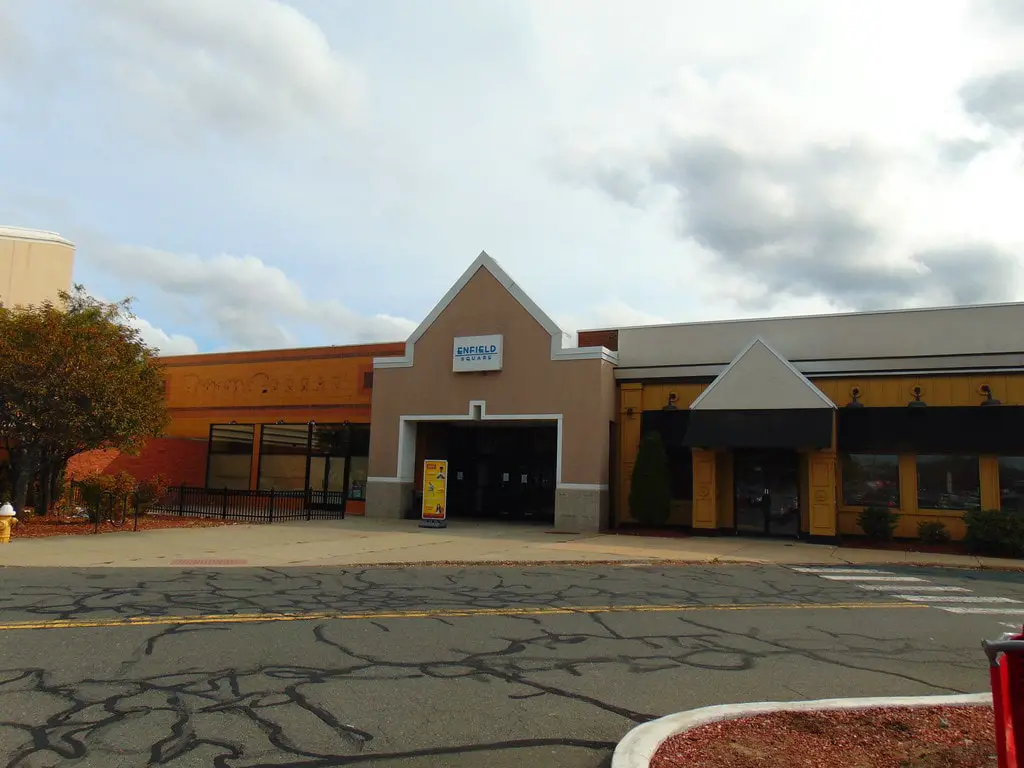
Lease Losses and Capital Transfers, 2000-2015
By 2000, the retail mix at Enfield Square started shifting.
JCPenney, one of the original anchors, shuttered its location in August that year.
The company was closing underperforming stores across the country, and Enfield's cut.
The space sat empty for months until Filene's expanded into it in February 2001, moving its men's and home departments into the former JCPenney unit.
That same year, a new buildout occurred. In October 2001, Target opened a fresh anchor on the north end.
This was a ground-up project, separate from any existing anchor footprint.
By that point, Filene's held two spots in the mall, Target had opened, and Sears had already taken over the old Steiger's space in 1997.
For a short time, all four anchor spots were filled again.
In 2006, another retail merger affected the site.
Federated Department Stores rebranded all Filene's locations as Macy's, including both stores at Enfield Square.
The rebrand included signage changes and some interior work, but the layouts stayed close to the old configurations.
The same year, Westfield sold the mall. Centro Properties Group, based in Australia, acquired it for $80 million.
From 2006 to 2012, it managed the property through its U.S. joint venture Centro Watt (later rebranded Brixmor Property Group).
In 2012, Brixmor brought in Madison Marquette to handle day-to-day management.
At that point, mall traffic was already softening, and national chains were beginning to pull back from secondary markets.
Distressed Assets and Deferred Maintenance, 2016-2023
In early 2016, Macy's announced it would close both of its locations at Enfield Square Mall.
The closures came during a wave of national downsizing aimed at shedding underperforming sites.
By spring, the two former Filene's units - converted to Macy's in 2006 - were empty. Financial trouble followed.
In February 2016, J.P. Morgan Chase foreclosed on the mall after Centro Enfield LLC defaulted on a $240 million loan tied to a broader renovation plan from 2006.
Ownership changed, but stability didn't return.
Tenants kept leaving. Ruby Tuesday closed in August 2016. Express followed, announcing in April 2017 that its lease would end in early May.
Sears closed its doors in April 2017 as part of a 150-store national closure.
During this same stretch, there were attempts to maintain activity.
Party City moved into a space in 2017. In June 2018, management transferred to KeyPoint Partners.
Later that year, in December, J.P. Morgan Chase sold the property through Ten-X.com for $10.85 million.
The buyer - later revealed in January 2019 - was a group consisting of Namdar Realty Group, Mason Asset Management, and Hakimi Global, Inc.
Maintenance worsened over time. In the summer of 2022, the roof collapsed over one of the vacant Macy's spaces.
The Town of Enfield stepped in after getting no response from the owner.
A $44,000 lien was added to the property to recover those emergency repair costs.
A few months later, in May 2023, during a training exercise, public safety staff found another breach in the roof.
Officials warned that failure to fix it could trigger a total shutdown, including for remaining tenants like Target and Cinemark.
The warning wasn't idle. By December, Cinemark had announced it would close on December 6, 2023.
Asset Transfer, Incentive Packages, and New Site Plans, 2023-2025
As operational issues mounted at Enfield Square, interest in redevelopment gained traction behind the scenes, but the most visible changes came slowly.
In January 2024, Bath & Body Works left the property and reopened at Enfield Commons, roughly a mile away.
The move was permanent. By February 2025, Party City shut down for good.
That closure had less to do with the mall itself - Party City Holdings Inc. was in financial distress nationwide and winding down operations across multiple locations.
During that same window, Namdar Realty Group reached a purchase and sale agreement with Woodsonia Acquisitions.
Woodsonia is based in Nebraska and specializes in retail-to-residential conversions.
Its proposal, which was public by spring, was to replace the mall structure with a $250 million mixed-use project called Enfield Marketplace.
The plan included 450 housing units, 35,000 square feet of new commercial space, and two hotels.
Retail would be scaled back but still present, focused on street-facing access instead of interior corridors.
Trails for biking and walking were part of the proposed site map.
Enfield's retail zoning overlays haven't yet been updated, but Woodsonia's redevelopment proposal anticipates a full tear-down and rebuild.
That model - tearing down the enclosed structure and returning to ground-up construction - has already been used by Woodsonia in other states, including a project in Omaha.
In March 2025, the State of Connecticut approved a $10 million grant to support the project.
This was part of a broader round of funding that also supported redevelopment projects in Waterbury and New London.
Locally, the Town Council approved a 10-year tax assessment deal in April.
The fixed value was set at $7.3 million through 2033.
That agreement was paired with a credit enhancement agreement to cover portions of project costs through future tax reimbursements.
Site control remains fragmented. As of spring 2025, Target still owns its parcel, and some of the surrounding lots are separately held.
However, the central mall footprint is under contract.
The scope of the redevelopment is large but not out of step with current trends.
Mixed-use infill projects have gained traction in areas where enclosed malls have closed.
In Enfield, zoning, planning, and funding pieces are starting to line up.
If the proposed timeline holds, demolition and construction could begin by July 2025.
